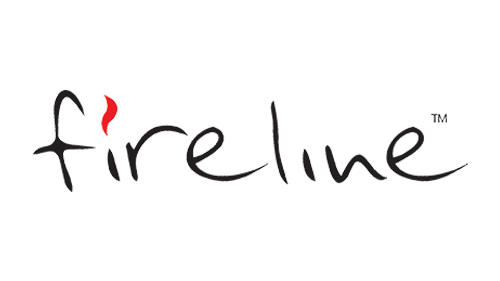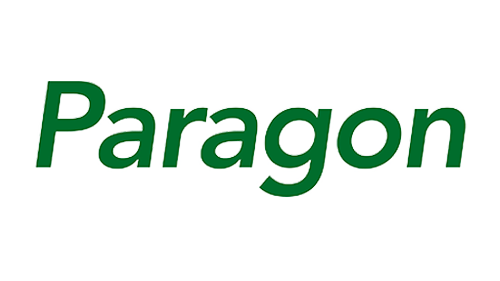An Ecodesign wood-burning stove is an incredibly reliable appliance which, if looked after correctly, will provide many years of reliable service. However, faults will occur sooner if you fail to look after it correctly. Below are 10 common problems which can occur with stoves:
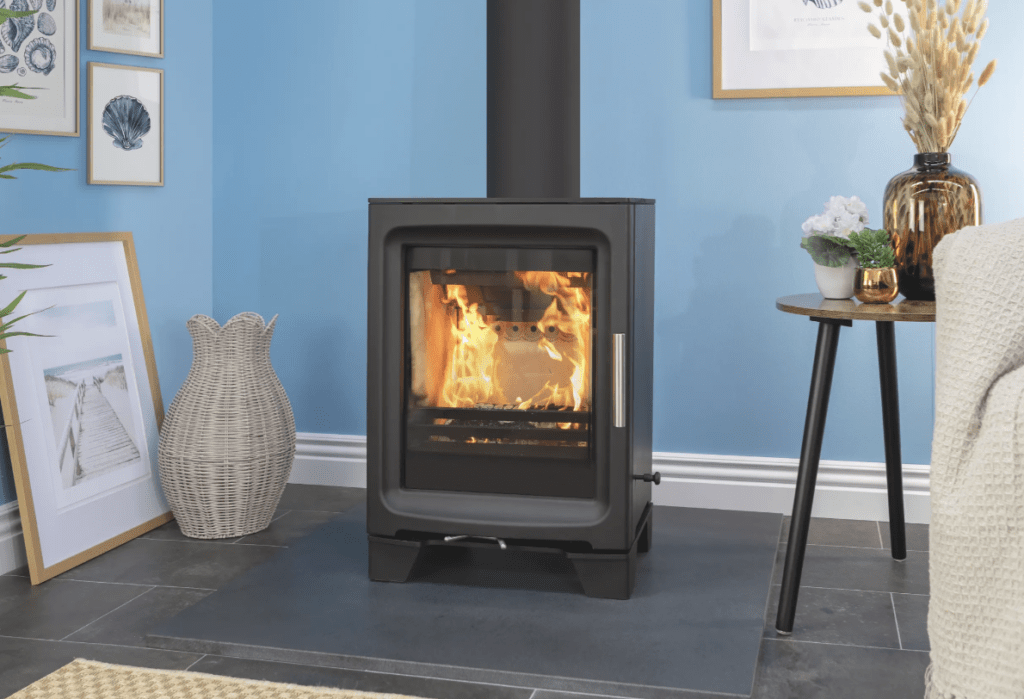
1. Creosote Buildup
Problem: Creosote, a byproduct of burning wood, accumulates in the chimney or flue. Excessive buildup can restrict airflow and pose a fire hazard.
Signs: Black, sticky residue in the flue or chimney, strong smoky odours, or poor draft.
Solution: Have the chimney cleaned regularly by a professional and burn only seasoned, dry wood to reduce creosote forming.
2. Poor Draft
Problem: A weak draft prevents smoke and gases from exiting the chimney, causing smoke to back up into the room.
Signs: Smoke escaping from the stove when the door is opened or lingering in the firebox.
Causes: Blocked chimney, cold flue, poor design, or insufficient air supply.
Solution: Check for blockages in the flue or chimney, preheat the flue by burning a small amount of kindling, or crack a window to improve airflow.
3. Smoke Spillage
Problem: Smoke enters the home instead of being drawn up the chimney.
Signs: Visible smoke in the room or around the stove.
Causes: Overloading the stove, inadequate draft, or improper venting.
Solution: Avoid overloading the stove, ensure the chimney is clean, and check for leaks or improper venting in the flue system.
4. Overheating or Warping
Problem: Burning the stove too hot can cause components to warp, crack, or fail prematurely.
Signs: Warped metal parts, cracked glass, or discolouration.
Solution: Use a stove thermometer to monitor the temperature and avoid exceeding the manufacturer’s recommended limits.
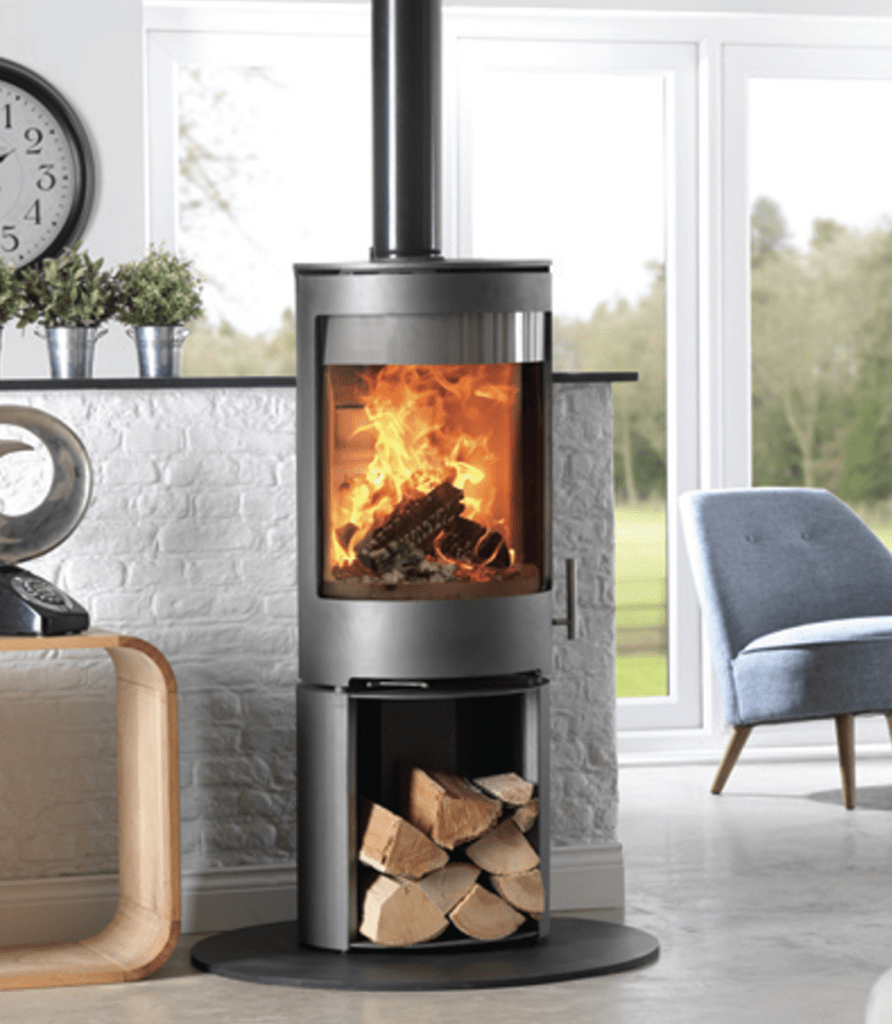
5. Cracked or Dirty Glass Door
Problem: Glass doors can crack from overheating or develop a blackened appearance due to soot and tar.
Signs: Reduced visibility or visible cracks.
Solution: Clean the glass regularly with a wood stove glass cleaner, and replace any cracked glass promptly.
6. Leaking or Damaged Seals
Problem: The gaskets around the door or flue connections can wear out, allowing air leaks.
Signs: Difficulty controlling the fire, excessive heat loss, or soot around the door.
Solution: Replace damaged gaskets or seals as needed and ensure doors close tightly.
7. Inefficient Burning
Problem: The stove does not produce sufficient heat or burns wood too quickly.
Signs: Excessive ash, poor heat output, or frequent need to refuel.
Causes: Poor-quality wood, insufficient airflow, or a clogged air intake.
Solution: Use dry, seasoned wood, ensure air vents are clear, and adjust the damper for optimal combustion.
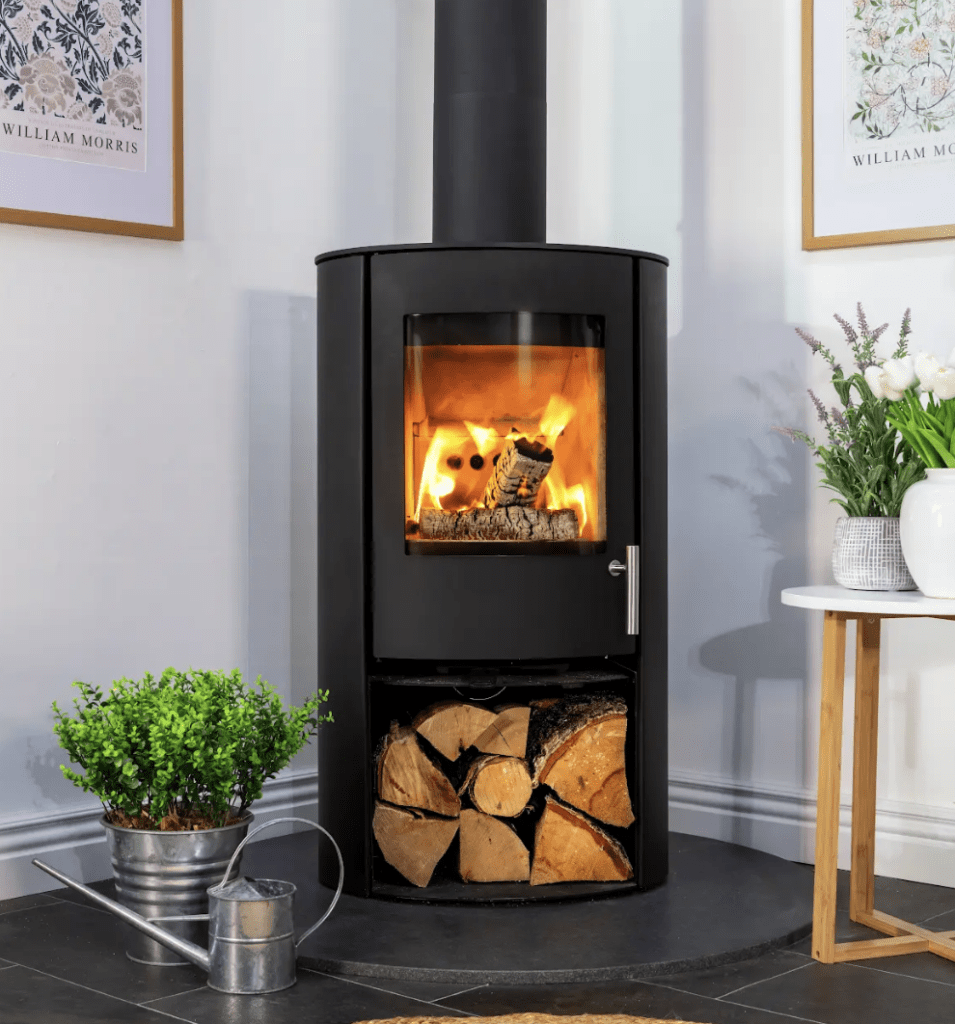
8. Rust and Corrosion
Problem: Moisture exposure can lead to rust, which weakens the stove’s structure and reduces efficiency.
Signs: Rust patches or flaky metal surfaces.
Solution: Keep the stove dry, apply stove polish or heat-resistant paint, and store firewood away from moisture.
9. Chimney Blockages
Problem: Obstructions like nests, debris, or creosote block the chimney.
Signs: Smoke backing up into the home or poor draft.
Solution: Regularly inspect and clean the chimney and install a chimney cap to prevent debris and animals from entering.
10. Difficulty Lighting or Maintaining a Fire
Problem: Fires that struggle to ignite or burn out quickly.
Signs: Fire dies shortly after starting or fails to produce sufficient heat.
Causes: Wet or green wood, insufficient airflow, or clogged air inlets.
Solution: Use properly seasoned wood, clean the stove’s air inlets, and follow proper fire-starting techniques.
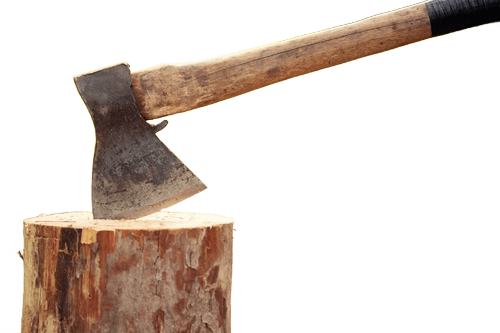
Burn the right wood
One of the best things you can do to help reduce many of the above issues is to burn the correct wood on your stove and make sure it’s correctly seasoned. There are significant benefits from burning the right type of wood on your stove.
Burning the right type of wood has the following benefits:
* Less in smoke
* Less spitting from the wood (usually sap)
* Less tar build up in the flue
* Reduced chances of blackening of stove window
* You produce a clean burn for a cleaner environment
* A better heat output
Read more here about the best wood to burn.
Seasoned wood only!
Burning correctly seasoned wood will ensure a better burn, fewer emissions, and a fire, which is much easier to light. The diagram below explains this in terms of heat output by moisture levels.
Fresh wood will have a moisture content of around 50%, whereas dried/seasoned wood will have a moisture content of around 20%. Since 1st May 2021, the government has been phasing out the sale of wet/unseasoned wood in small volumes (under 2m3) in England. This is part of the successful The Ready to Burn initiative; where DEFRA appointed HETAS and Woodsure to run this certification scheme, which educates and informs consumers about the environmental dangers of burning wet/unseasoned wood, and to drive out the sale of unseasoned wood.
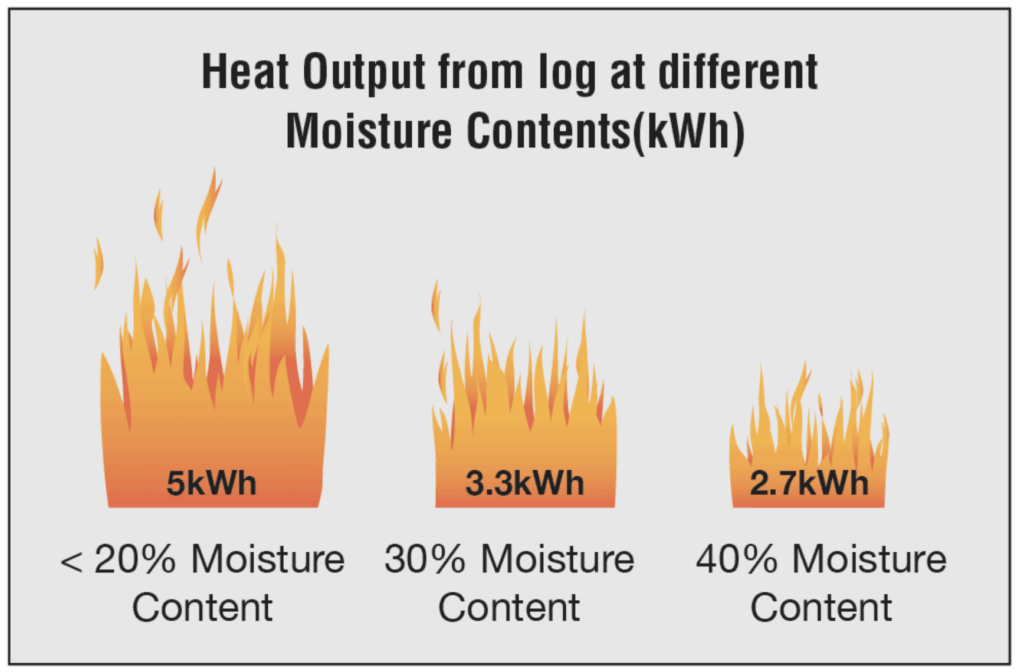
All logs sold in qualities under 2m3 in England must be certified as Ready to Burn.
If you burn 10kg of dry wood with a moisture content of 20% then you have evaporated 2kg of water, as opposed to unseasoned wet wood, which could have a moisture or water content of 50%, where you would have to evaporate 5kg of water. The wasted energy of having to evaporate the additional water impacts a fire’s performance and causes congestion in the flue.





